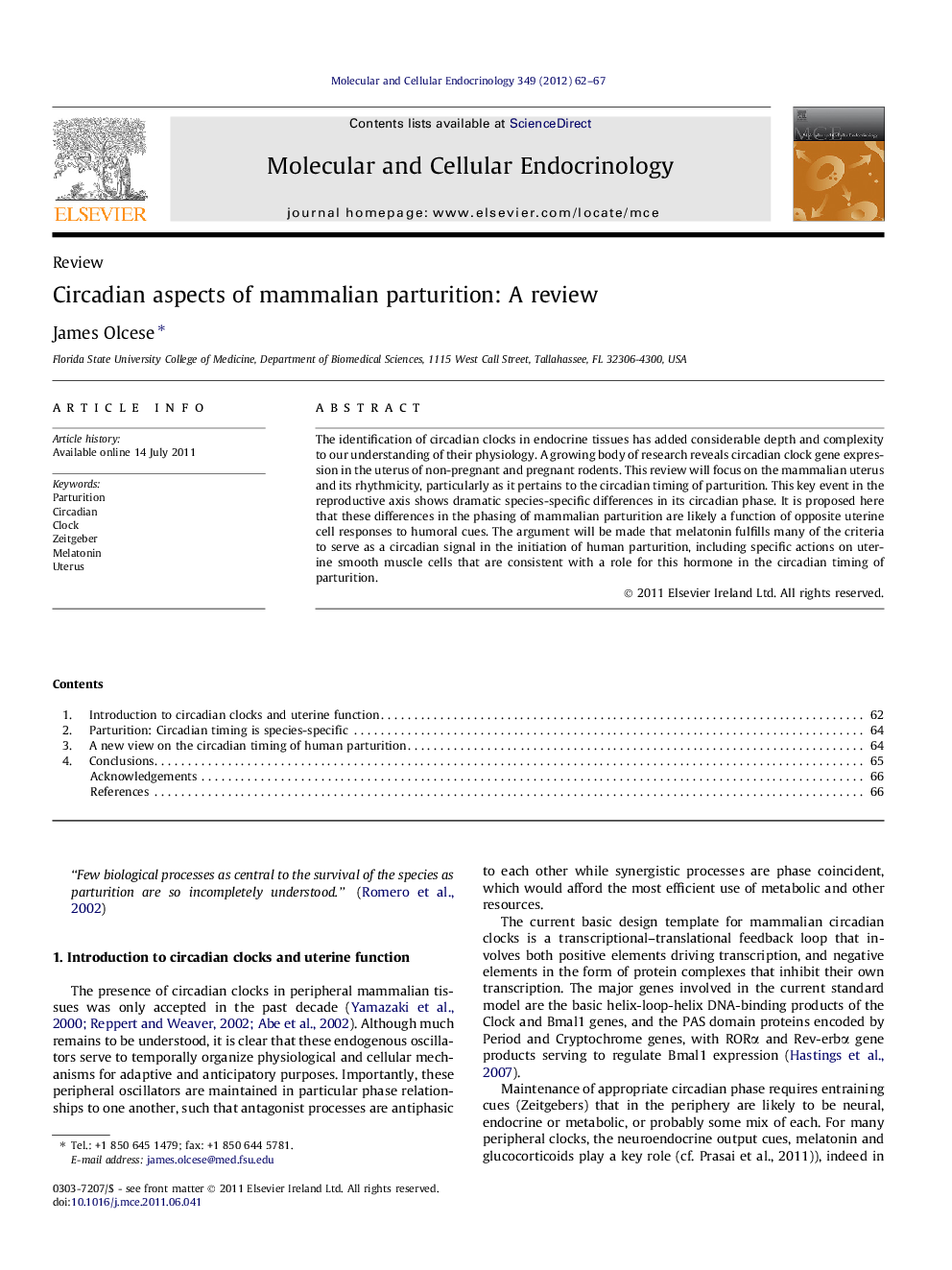| Article ID | Journal | Published Year | Pages | File Type |
|---|---|---|---|---|
| 2196445 | Molecular and Cellular Endocrinology | 2012 | 6 Pages |
The identification of circadian clocks in endocrine tissues has added considerable depth and complexity to our understanding of their physiology. A growing body of research reveals circadian clock gene expression in the uterus of non-pregnant and pregnant rodents. This review will focus on the mammalian uterus and its rhythmicity, particularly as it pertains to the circadian timing of parturition. This key event in the reproductive axis shows dramatic species-specific differences in its circadian phase. It is proposed here that these differences in the phasing of mammalian parturition are likely a function of opposite uterine cell responses to humoral cues. The argument will be made that melatonin fulfills many of the criteria to serve as a circadian signal in the initiation of human parturition, including specific actions on uterine smooth muscle cells that are consistent with a role for this hormone in the circadian timing of parturition.
► Uterine tissues from rodents show circadian clock gene expression. ► Parturition is timed to night or day depending on the temporal niche of the species. ► Accumulating evidence suggests that melatonin serves as a clock output signal. ► Melatonin via receptors promotes human myometrial smooth muscle cell contractions. ► It is proposed that melatonin temporally gates the onset of human parturition.
